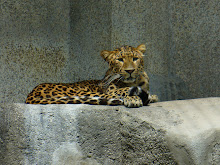 Welcome (back) to Weirdbeautiful!
Welcome (back) to Weirdbeautiful!Today’s installment of weirdbeauty is a guest post on the
wild-flowers of the Inca trail, it was co-written and entirely illustrated by
Lazáro Pina. All of these pictures were taken at high altitudes along the Inca trail:
“The Inca trail runs from Cusco city, in Peru to Machu Picchu, through the Andes Cordillera and takes four days to walk. I went there in January (this year).There were not very many flowers along the trail, but, because I was alone almost all the time, I was able to spend my time peacefully observing all the natural details and photographing those I saw. I found all of these flowers in separate places- these pictures were taken on different days and on different parts of the trail.
I believe that the plant above is a kind of lupin (there are between 200 and 600 species of lupin), possibly and Andean lupin. The bean of the Andean Lupin (see
http://en.wikipedia.org/wiki/Andean_Lupin) ,
Lupinus mutabilis (locally known as “tarwi”, amongst other names) were actually used as a food across the Incan Empire.

The trail is tiring to walk, because the air is thin- the Inca trail ranges in altitude from around 2800m above sea level, to 4215m at its highest point. Actually, at some points along the trail, local people have set up markets with stalls selling tea made from Coca leaves: the same plant that is used to make cocaine. People drink the tea because it helps with altitude sickness, although I am told that it has a very bitter, unpleasant and leafy flavour.
The plants and flowers on the Inca trail are very unlike those I am used to in Brazil; here the plants are very different as the weather is so much hotter and we don't have that high altitude. In fact, I could never have imagined a flower with just one petal, like the one above. The weather along the Inca trail was very cold and wet, at least, it was when I was there and, at night, it was below freezing.

The area around (lake)
Laguna Cochapata is known as deer habitat, but I didn't personally see any animals at all on the trail, beside birds (there were a lot of birds).
These two pictures below were both taken in an Inca ruin- there were a lot of flowers here-in this one place, that had grown up between the rocks on the wall. The others flowers were rare, I just saw them once or twice during the entire trek. The flowers on the Inca trail are sometimes weird and sometime beautiful, but the scenery and views are all just amazing. For example, on the last day, I saw the sunrise at Machu Picchu, which was really outstanding.”


Guest post by Lazáro Pina- Images by Lazáro Pina, Text L. Pina & V. Neblik















